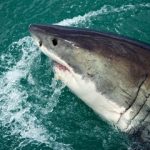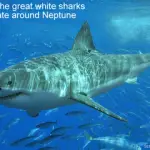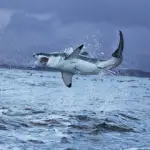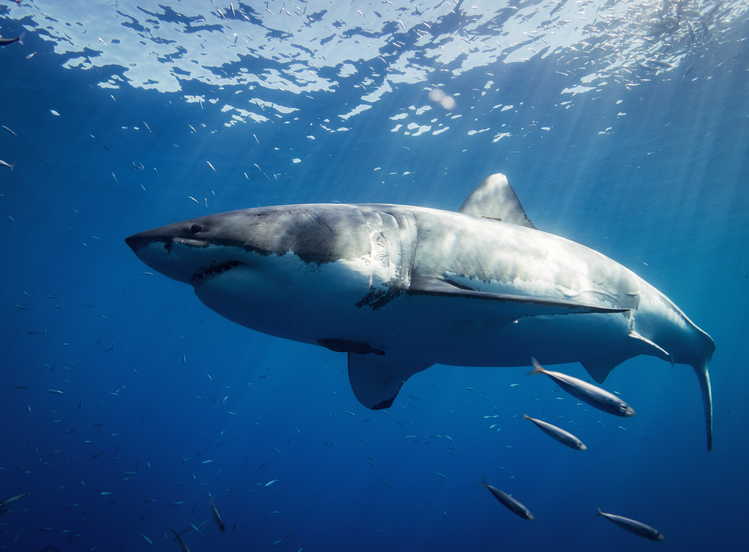
You may be planning your trip to the Galapagos Islands and wondering if there are great white sharks in the Galapagos. This may be important to you because you would like to see great white sharks, or because you don’t want to see them. Either way it’s important to know; are there great white sharks in Galapagos Islands?
It’s possible that at certain times of the year great white sharks could be near to the Galapagos Islands. This is because of the water temperature drops to within a great white shark’s “temperature comfort zone” of 12-24°C (54-75°F) in June to December and sealions are present as a food source too.
The best way to dive the Galapagos Islands, and especially Darwin Island and Wolf Rock, is by a scuba diving liveaboard. You can check the latest and best deals on Galapagos liveaboards using the following window:
I didn’t think there were great white sharks on the Great Barrier Reef until I researched it. You may like to read this article and watch the video of this 4 metre + (13+ feet) great white shark in the Great Barrier Reef.
I must admit, I also didn’t think there were great white sharks in the Caribbean and in the Gulf of Mexico. That was until I researched this too. I then wrote this article about great white sharks in the Caribbean and the Gulf of Mexico. What you read may surprise you, as it did me. You may not realise there are great whites around the Florida coast.
I was also very surprised when I wrote this article about a great white shark ‘ping’ near to the Maldives. You might like to also read this article too! I give a good explanation about the Maldives great white shark story in the article.
Based on the above research, the favourable water temperatures in the Galapagos Islands and the great white food sources, it wouldn’t surprise me to find these magnificent creatures of the sea in this region too.
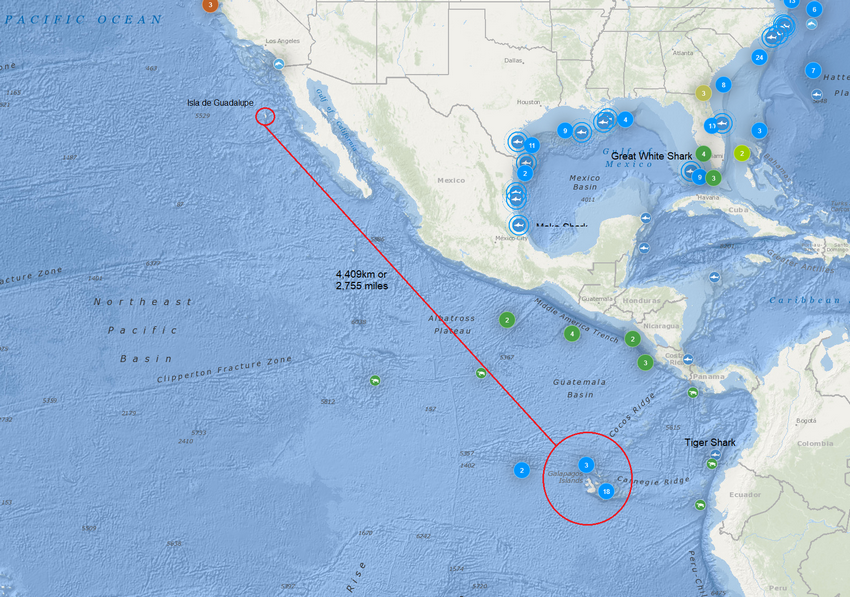
Great white sharks in the Pacific Ocean – Isla de Guadalupe
There are great white sharks in the Pacific Ocean. Many of these congregate around the Isla de Guadalupe, which is some 4,409 kilometres (2,755 miles) northwest of the Galapagos Islands. In fact Isla de Guadalupe is on this list of the best places to cage dive with sharks. You may think that over four thousand kilometres, or nearly three thousand miles, is a long way, but great white sharks migrate very long distances.
The longest recorded migration of any fish is a great white shark. One such great white shark was recorded to have swam from South Africa to Australia. This great white shark migration is over 10,000 kilometres (over 6,000 miles).
You’ll see the only shark noted on the map nearest to the Galapagos Islands is a tiger shark. In fact tiger sharks are one of the 32 sharks species that can be seen around the Galapagos Islands. This is shown in the following map image from the Ocearch Shark Tracker.
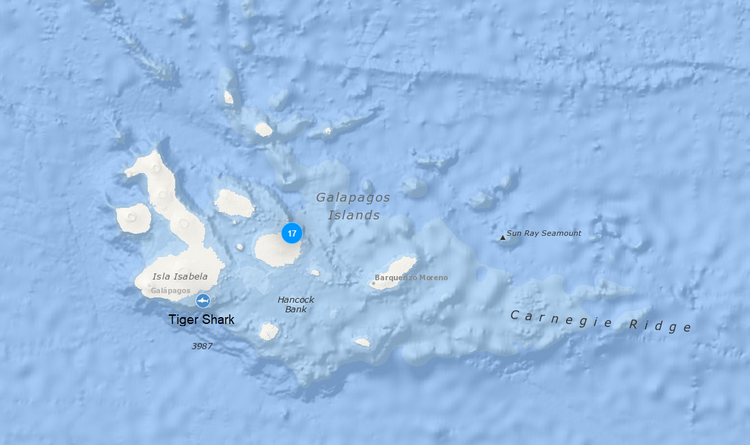
Are there sharks at Galapagos Islands?
The Galapagos Islands are home to one of the largest proliferations of schooling hammerhead sharks at Wolf and Darwin Islands. Mixed with these hammerheads are Galapagos sharks. Whale sharks are also present in the Galapagos Islands, but it’s not certain there are great white sharks as well.
Great white sharks (Carcharodon carcharias) generally prefer water temperatures between 12-24°C (54-75°F). This is lower than the average temperature of the Galapagos Islands at certain times of the year. Water temperatures and the best time to go to the Galapagos Islands can be found on this article about Galapagos liveaboard diving.
On this page there’s a very handy table of the “best time to dive the Galapagos Islands“, which includes average water temperatures for each month. This table reveals the following ideal times for great white sharks to be in the Galapagos Islands:
- The lowest average water temperature is in September, which is 22°C (72°F) – Ideal temperature for great white sharks.
- The months of July, August, October and November, the average water temperature is just 23°C (73°F), so it’s entirely possible great white sharks might move into the region during this months.
- The months of June and December, the average water temperature in the Galapagos is 24°C (75°F). This is at the top end of the temperate range preferred by great white sharks, but still within their “comfortable temperature range“.
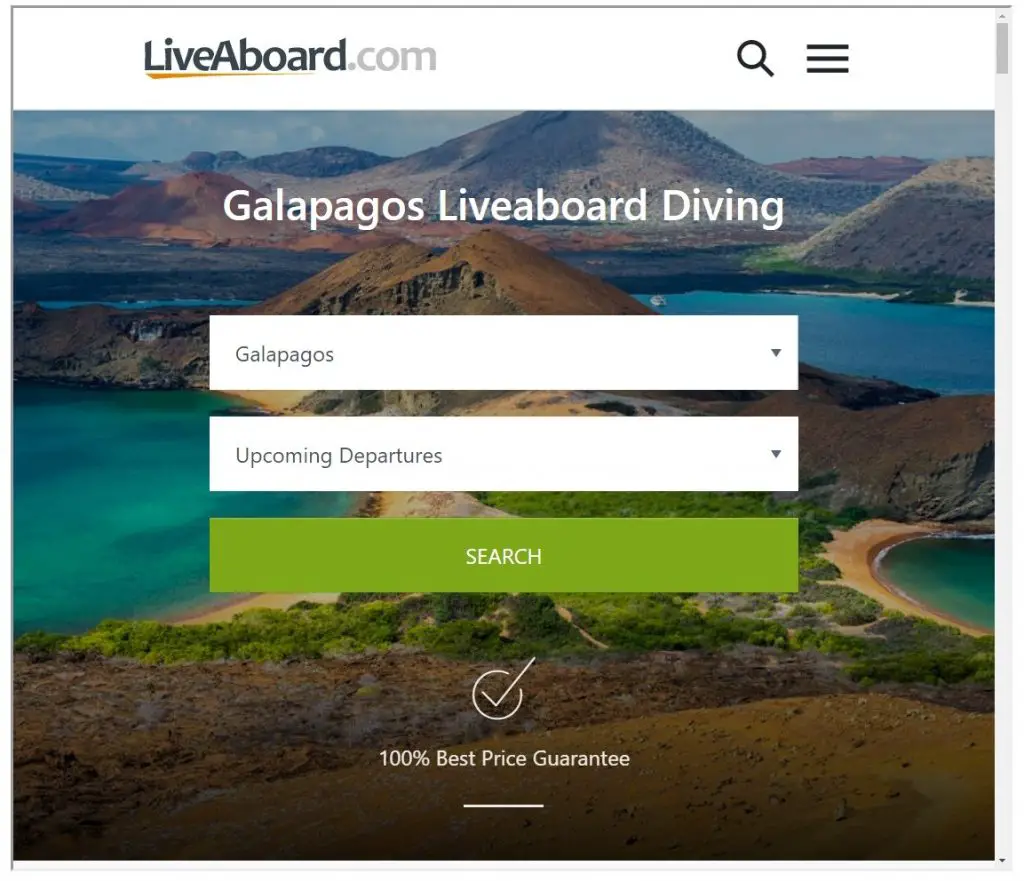
Are sharks in Galapagos dangerous?
Any large shark has the potential to be dangerous to humans, but generally speaking sharks are not dangerous to scuba divers when not provoked. Provocation can include spear fishing, as this attacks sharks, as they seen an opportunity for an easy meal. The Galapagos shark is a very inquisitive and persistent shark and is potentially dangerous to humans. But even though the Galapagos shark is considered potentially dangerous, it rarely attacks humans.
Do you have to worry about sharks in the Galapagos Islands?
You don’t have to worry about sharks in the Galapagos Islands. Reviewing the information on Shark Attack Data, there have been a total of just eight shark attacks in Ecuador. Since the Galapagos Islands are a part of Ecuador, this shark attack count would include the Galapagos.
Of the eight shark attacks in total, six of these attacks were recorded in the Galapagos Islands. Non of which proved fatal. Also, none of these shark attacks involved scuba divers and most are on surfers.
Great white shark tagging by Ocearch
The movement and activity of great white sharks has been exposed in recent years by Ocearch. But as far as I can make out, there have been no great white shark ‘pings’ near the Galapagos Islands. However, I will keep researching, and if I find out more I will update this article.
This is the video of Ocearch tagging white shark Lydia
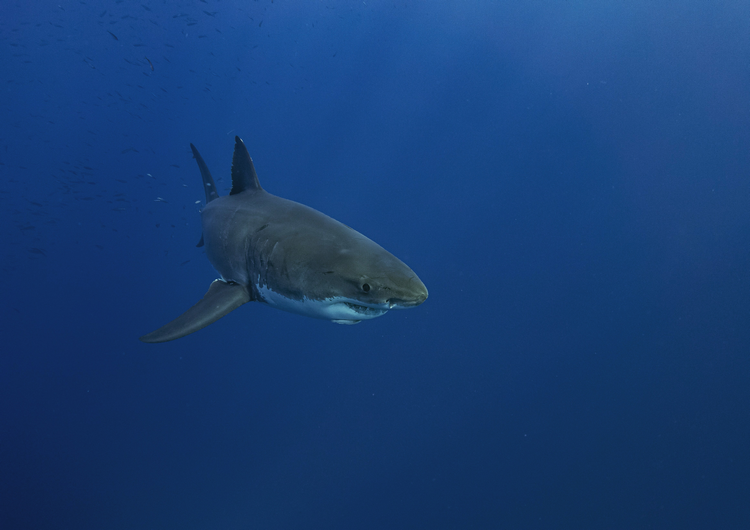
Final thoughts on are there great white sharks in the Galapagos Islands
Please note there have been no sightings of great white sharks near the Galapagos Islands. Where I have said “there may be great whites in the Galapagos”, this has been based purely on two factors. These are the preferred water temperature for great white sharks and their preferred diet, i.e. pinnipeds. Pinnipeds include sea lions, which are found around the Galapagos Islands are rich in blubber and a favourite meal for great white sharks.
Great whites are temperate water animals. Whilst the Galapagos waters are pretty cold due to the currents, they are near the equator and generally warm, which means that any great white sharks will be just passing by. It’s highly likely that if great whites are stopping at the Galapagos Islands to feed, someone would probably have seen one by now.
If you are interested in great white shark cage diving, you can do this from San Diego. Great white shark cage diving from San Diego go to the Isla de Guadalupe.
I hope you enjoyed this page about are there great white sharks in Galapagos Islands
If you have more questions either about snorkelling or scuba diving (or specifically about are there great white sharks in Galapagos Islands), please comment below with your questions.
Please share your experiences, plus dive sites, resorts and liveaboards you recommend. Share the time of year of your trip together with what you saw, the visibility, currents and dive operator, as this will help others who read this page.
There will also be many more pages and articles about scuba and scuba diving safety tips (and on snorkelling too) for you to read and learn about this fabulous sport.
Have fun and be safe!

